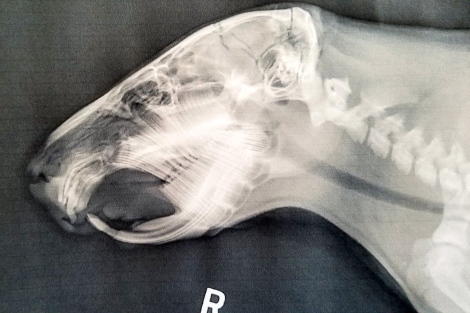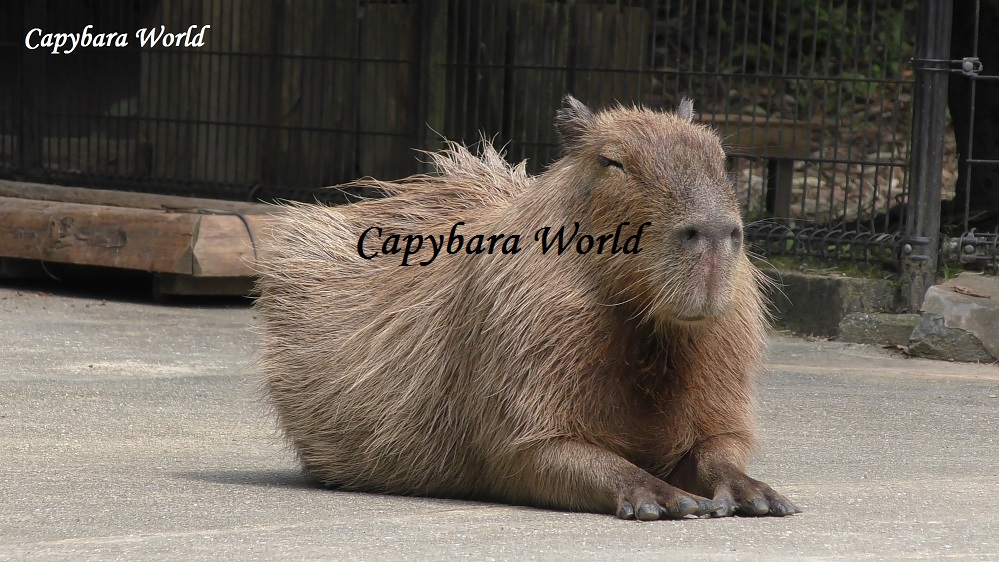If you’re perusing this blog post, you’re likely aware that capybaras are the largest rodents on the planet. Many of you also know that rodent teeth are continually growing, necessitating their constant chewing to keep them sharp. It’s easy to overlook, but even their molars keep growing. It’s primarily the incisors, those prominent front teeth, that continually remind us we’re gazing at a rodent.

Baby Gidget: everything but the teeth
When humans lose a baby tooth, an adult tooth replaces it. However, losing an adult tooth means it’s gone for good and requires a prosthetic replacement to fill the void. So, you might think that if a rodent loses a tooth, it’s not a significant issue because it will just grow back. Well, it’s a bit more complicated. While Dobby’s broken upper incisors did indeed regenerate, it’s not always such a smooth process. Rodents and rabbits can experience overgrown teeth that impinge on their gums and interfere with eating. In many cases, trimming can help them align properly over time. However, scenarios can go awry if the upper incisors refuse to grow in their intended curved shape, leading to unpredictable formations that don’t properly emerge from the gums.
Tragically, this was the case for our friend Gidget.

Dobby shows off his formidable chompers.
Contrast Dobby’s robust, although fractured, teeth with the oddly shaped teeth of Gidget:

Dobby’s upper incisors show up like a uniform, solid curve. The lower incisors line up with the uppers at the cutting surface.

Gidget’s upper incisors show as a conglomerate of wiggly lines above the palate. Her lower incisors have grown too far, there being no uppers to meet and sharpen them.
Rodents possess a “tooth bud” from which their teeth develop and grow. Similar to guinea pigs, capybaras are born with their eyes open, clad in fur, and equipped with teeth, ready to graze alongside the herd. Ideally, a tooth should emerge from the tooth bud with a smooth, uniform curve. The harder front enamel (the visible part of the tooth) and the softer back enamel (inside the mouth) allow the upper and lower incisors to sharpen each other into razor-like edges with each bite. While Gidget’s lower incisors are overgrown but mostly normal, her upper incisors are bizarrely misshapen, appearing like noodles. This unusual formation prevents her upper and lower teeth from functioning together like scissors to cut grass.

Gidget is a typical spoiled pet capybara, enjoying a leisurely bath.
As the situation became clear that Gidget’s upper incisors would never form correctly, it was also evident that her lower incisors would eventually cut into her upper palate without regular trimmings, which would require anesthesia each time. One can almost see the dollar signs illuminating and hear the voodoo chants accompanied by drumming along the Amazon. The only viable solution was the removal of both her upper and lower incisors, which would be very costly, not to mention finding a vet willing to perform such a specialized operation on an exotic pet.

Gidget the capybara, looking perky after her surgery.
Rodents that have undergone incisor removals tend to adapt remarkably well, especially under the care of dedicated owners. Gidget is recovering well, and we expect her to thrive. To assist with her veterinary costs, I started a Go Fund Me campaign. Additionally, I plan to document her procedure with more technical details and photos for the ROUS Foundation, which will continue to follow her case. Unfortunately, we may never uncover the reason behind her dental deformity, as it doesn’t seem to be related to her diet or any common vitamin deficiency. Such anomalies can afflict any pet, but finding veterinarians willing to treat capybaras is exceptionally challenging. Caring for exotic pets can indeed be a costly responsibility.



